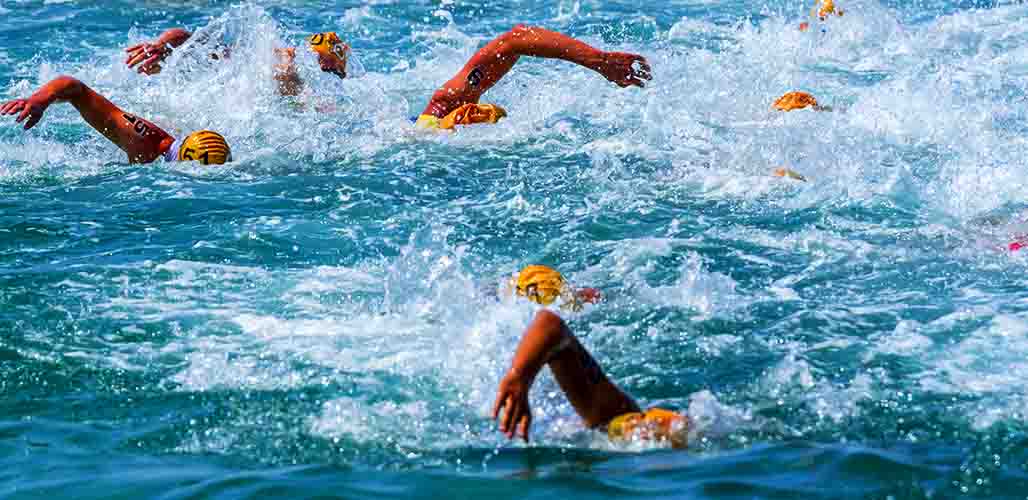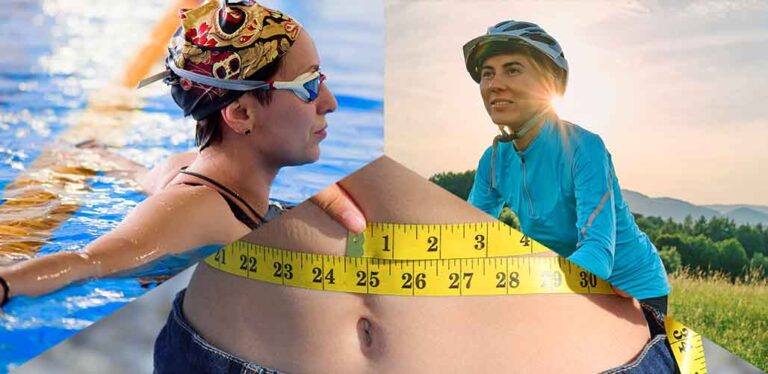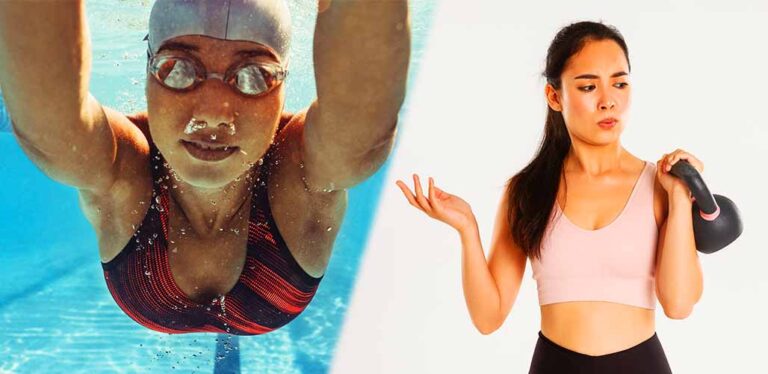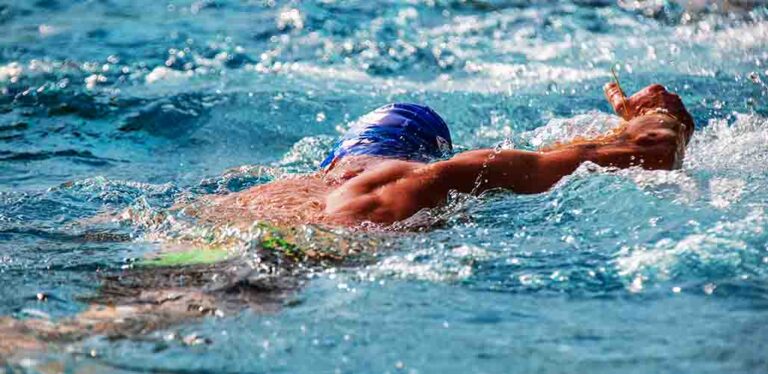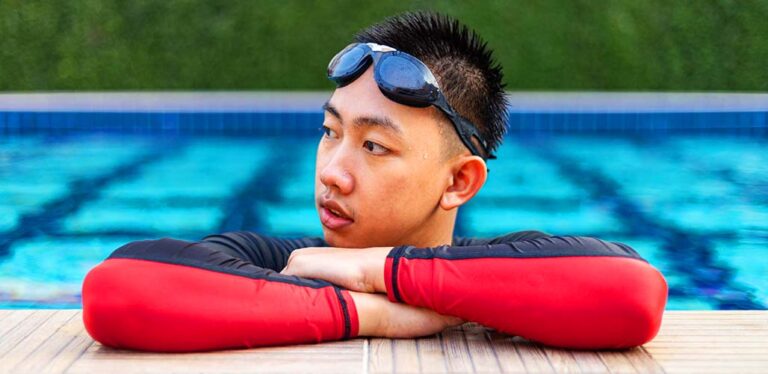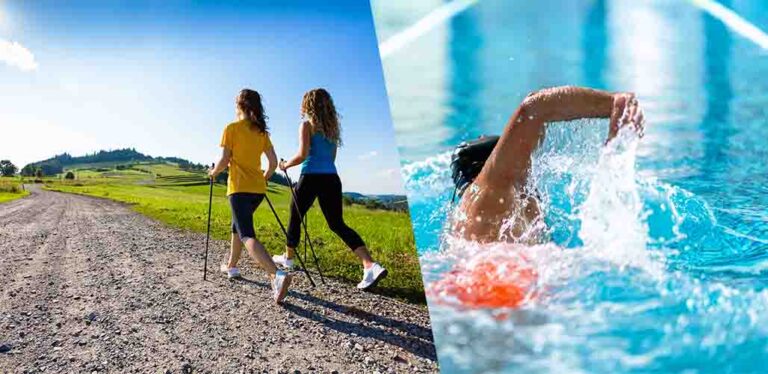Can You Stop Swimming During A Triathlon?
Triathlons are a great way to test your swimming, general fitness and endurance. But they can be incredibly hard going. Can you stop swimming during a triathlon? It’s not unusual to want or need to stop during the swimming leg of your triathlon. And although you are allowed to stop, there are some important caveats. You can stop for a rest as long as you don’t progress forward. Today I’ll share my experiences of why people get tired during this part of the race and what the judges will and won’t allow. I’ll share techniques you can use to make you more efficient, as well as those tricky pitfalls to avoid.
Contents
- What are triathlons?
- Can you stop swimming during a triathlon?
- What happens when you stop swimming?
- What to expect during the swimming leg of a triathlon
- How to make sure you won’t need to stop swimming
What Is a Triathlon?
A triathlon is an endurance sport comprising three different events: swimming, cycling, and running. Triathlons can vary in distance, but a standard Olympic triathlon starts with a 0.93-mile (1.5K) swim, a 24.8-mile (40K) bike, and a 6.2-mile (10K) run to finish the race.
Can You Stop Swimming During A Triathlon?
Competitors are free to stop in the middle of the swimming leg of the race and take a break. Triathletes can rest by standing on the ocean floor or by holding onto something like a buoy or a boat. If competitors choose to rest, they must stay in one place. You must not advance forward while resting.
My First Triathlon
I have always considered myself a strong swimmer. While training for my first triathlon, I paid much more attention to the running and cycling leg of the race. That was my first big mistake. On the day of the big race, I was feeling confident. The siren sounded and everyone ran for the water. I immediately realized this was different from anything I had ever experienced.
It was challenging to find some space. Elbows and arms were thrashing the water around me, and I couldn’t see a thing. I didn’t know if I was even heading in the right direction. All I could do was follow the crowd and hope for the best.
My swimming technique disappeared; I even forgot how to breathe. I tried to get into a rhythm but I was struggling. Fatigue had already set in, and I was starting to doubt myself. My arms were aching like never before, and I knew I would have to stop somehow.
Was stopping grounds for disqualification? I didn’t know, but I had no choice. I spotted a buoy on the course, went to it, and held on for dear life.
What Happens When You Stop Swimming During A Triathlon?
As I watched the other competitors surge forward, another swimmer with the same problems joined me at the buoy for a well-needed breather. As we bobbed about in the water, he explained that stopping during the race was OK and that we should keep going. We agreed to stay together for the rest of the race to help each other along the way.
We finished at the back of the group, but I was proud of myself for not quitting. Next time I enter a triathlon, I was sure to read the rules and understand the demands of the race entirely!
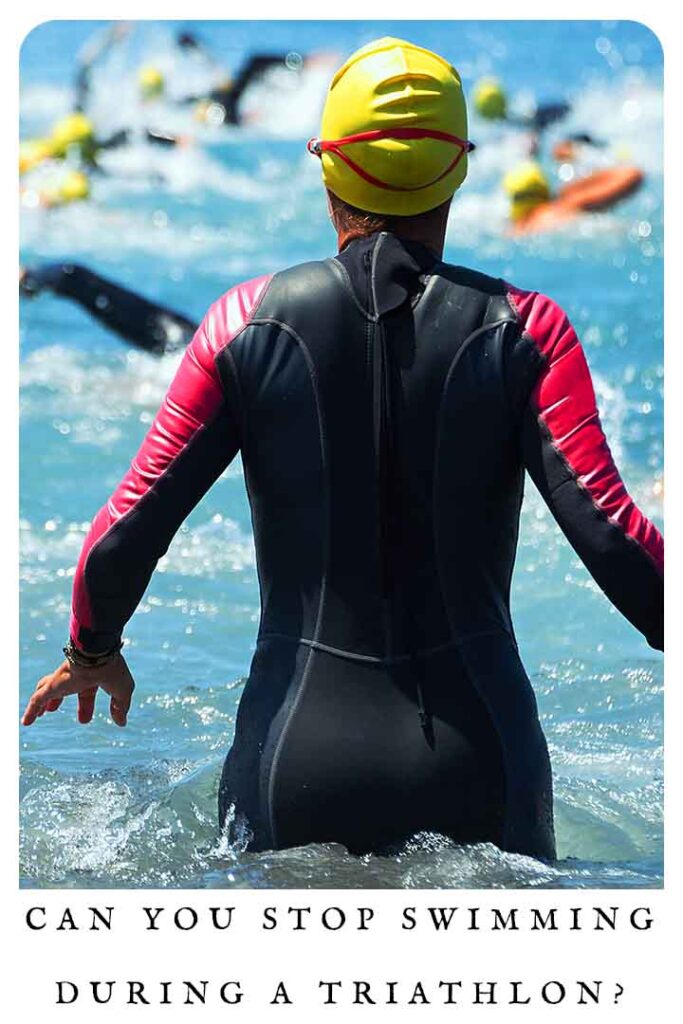
What to Expect During the Swimming Leg of a Triathlon
The swimming part of some triathlons takes place in a swimming pool. For most triathlons, the swim takes place in open water. The main difference in the pool is the turn at each end. You can only do touch turns. You can’t do tumble turns.
Entering the Water
Many competitors enter the water together, all battling for the best position. Triathletes call this the “washing machine,” as it takes a while for the race to settle.
Fighting for position amungst all the other competitors can also be very disorientating. Visibility is very poor and you must be sure you’re traveling in the right direction.
Fatigue
For some, It’s not long before fatigue starts to set in.
The race is mentally and physically exhausting, leaving some competitors with no choice but to stop for a rest.
Wearing a Wetsuit
You can wear a wetsuit when the water temperature is 78-84 degrees Fahrenheit. While a wet suit can be essential for low temperatures, it can cause problems.
A wet suit will make you float easier and may leave your legs too high in the water. Compensating with your arms is exhausting. Massive energy loss can be the result; whether or not to stop becomes a mental battle.
What Can I Do to Avoid Stopping to Rest?
With a strong swimming technique, you can lower resistance while improving propulsion.
Resistance, or drag, is a force that slows you down as you travel through the water. As you swim forward, water pushes back on you. The less resistance you have to fight against, the faster and more smoothly you will swim.
You only have so much energy. You will get tired and move slower when your energy runs low. Water never stops resisting your efforts. You must learn how to balance your body in the water. Align your head, hips, and heels to improve propulsion.
Can You Stop Swimming During a Triathlon?
The rulebook states that you can stop swimming during a triathlon. Most competitors know that a triathlon is a high-endurance race. But not everyone is ready for how difficult the swimming leg of the race can be.
Finding a good position and knowing how to handle all the elements of the swim takes a lot of experience. For beginners like me, it is a real shock to the system. Knowing that you can stop if you have to will help, especially if you’re a first-timer.
Keep your fitness at a high level and learn the appropriate swimming techniques. Getting as much experience as possible is the best advice.
More About Swimming For Sport
- Other good sports for swimmers to compete in
- Is frozen water diving safe?
- Why can’t some people float?
- Cold water swim preparation tips
- Is swimming or weight lifting better for fitness?
Resources
- Peeling and Landers, “Swimming intensity during triathlon: A review of current research and strategies to enhance race performance”. Journal of sports sciences, 2009.
- Peeling et al. “Effect of swimming intensity on subsequent cycling and overall triathlon performance”. British Journal of Sports, 2005.
- Bentley et al. “The effects of exercise intensity or drafting during swimming on subsequent cycling performance in triathletes”. Journal of Science, 2007.

